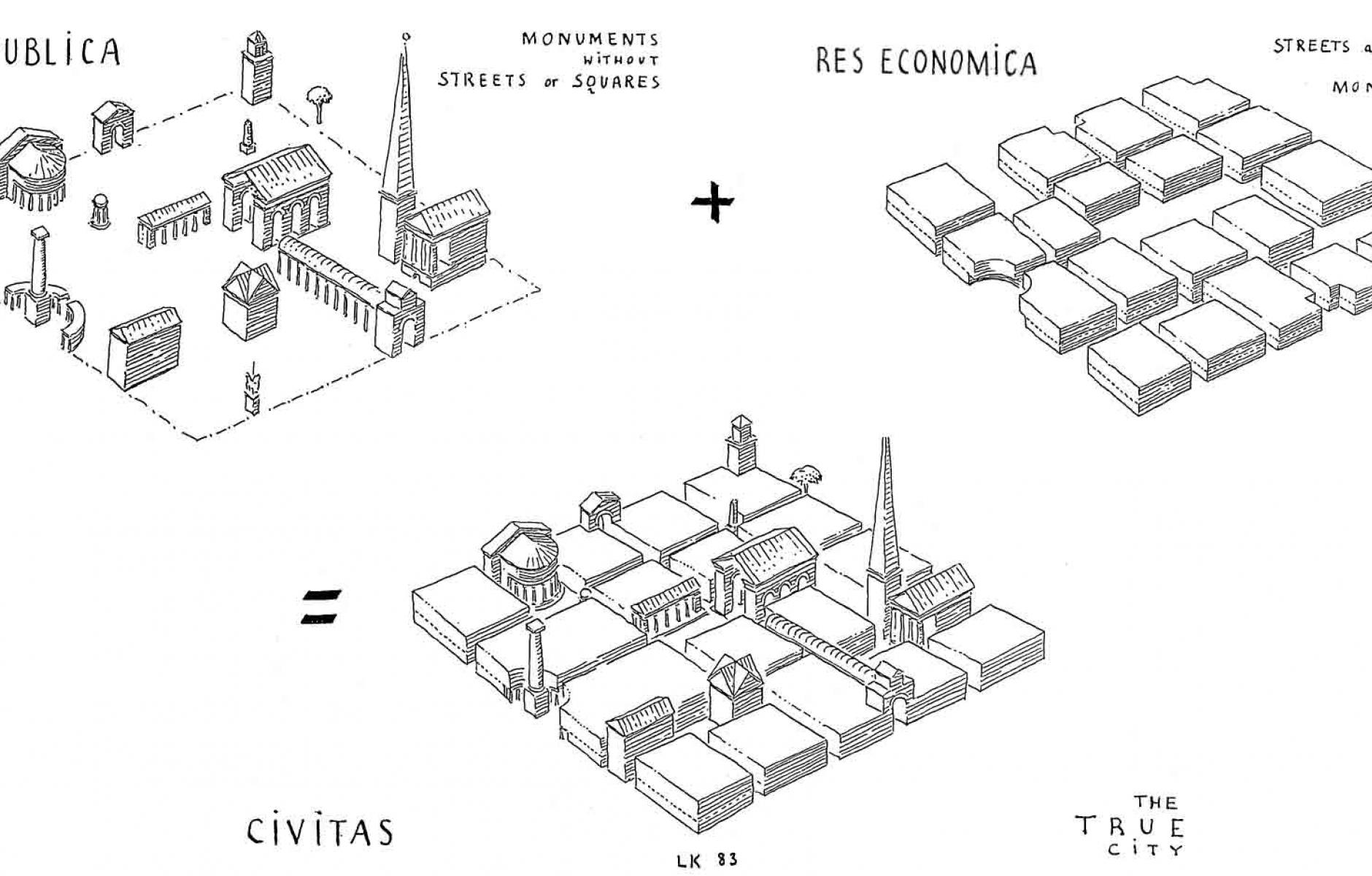
Leon Krier's foundational diagram
Leon Krier’s Res Publica Res Economica Civitas ideogram is the foundational diagram for New Urbanism. The thesis promotes that real towns and cities are made up of two distinct realms — public and private.
Krier likened the upper left drawing to a tourist map one purchases on visiting a town. Buildings and spaces that the citizens are most proud of are represented in three-dimensions. These illustrated buildings represent the history, culture and values of the society. In contrast, the building blocks of the private realm are drawn unembellished—suggesting that they are less important than the civic buildings and should be quieter in their architectural expression.
The drawing shows public buildings associated with public outdoor spaces confirming their accessibility to all citizens. The size of the public squares demarcate the hierarchy or aspirations of the civic institution that fronts the space. The thoroughfare network serves as umbilical cords connecting and enlivening the outdoor public rooms.
The drawing also indicates the public spaces and buildings scattered across the townscape, and not grouped together in one zone. This strategy permits the various civic institutions to lend identity and characterize different parts of the town or city. This 1983 drawing made the fundamental understanding of the city accessible, and permitted a compelling critique of the mono-culture sprawl environments that populate the American landscape.




